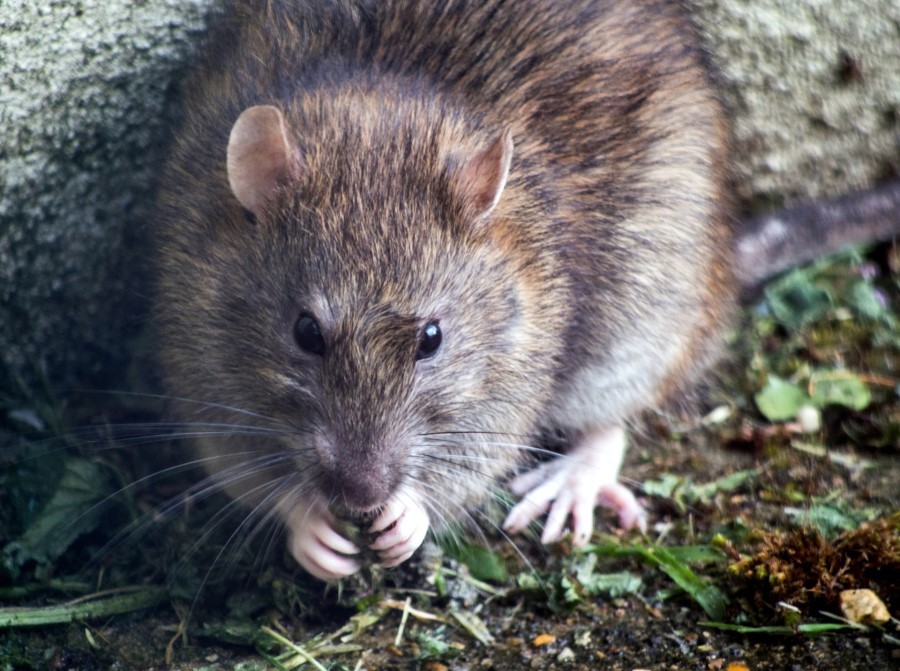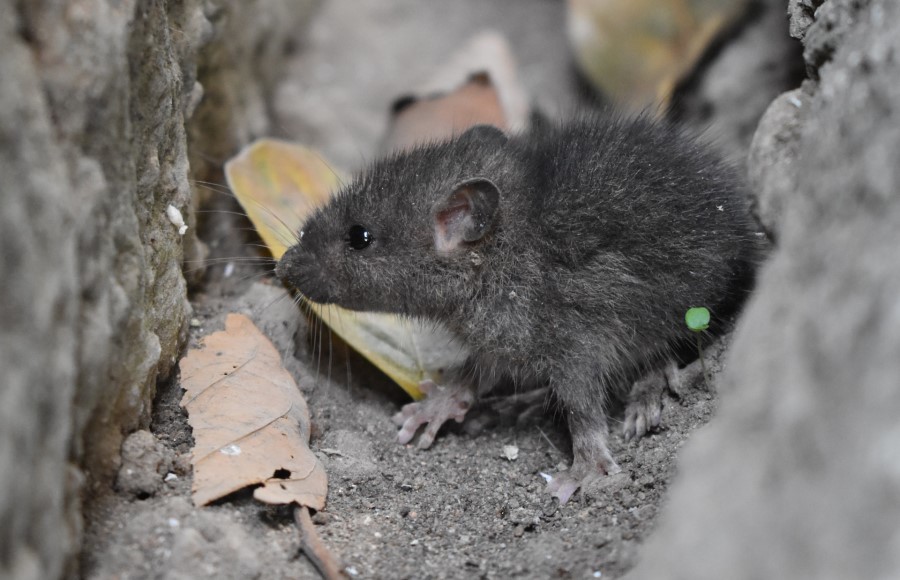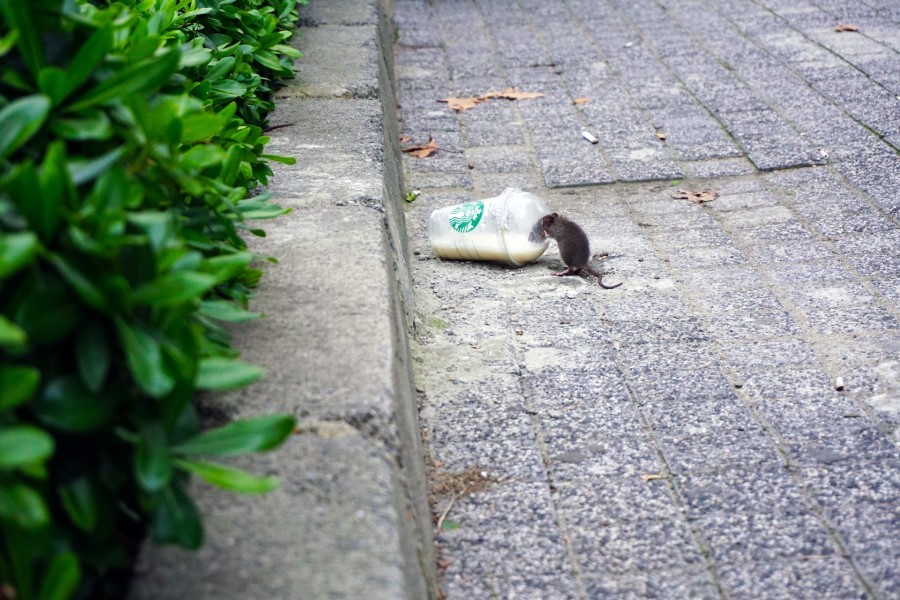Mice vs Rats: Understanding the Difference
Reading time: 8 minutesYou’re likely to find cute and helpful depictions of mice and rats in movies and TV, but these small mammals can often be the opposite. These rodents are nuisance animals that cause damage to your property and carry serious health risks.
Understanding the differences between mice and rats is key to eliminating them from your property, so we’ve compiled a comprehensive guide. You’ll learn more about their habitats and behaviour differences while exploring top management methods below.
Appearance
The most significant difference between rats and mice is their size. Rats are larger than mice, measuring about 40 cm from nose to tail and weighing nearly a whole kilogram. Mice, on the other hand, measure 7 to 10 cm and weigh less than 1/50th of a kilogram.
The rat’s distinguishing features include:
- Short, flat snouts
- Small, beady eyes
- Thick, scaly tails that are shorter in proportion to their body length
- Large torsos
- Small ears that lay flat against the head
- Large feet with long toes

Mice look much different with:
- Pointed faces
- Large, round eyes
- Long, hairless tails that are thinner than a rat’s
- Delicate, small frames
- Large, rounded ears that stand up on their own
- Tiny feet with short toes

Both rodents can have black, brown, reddish-brown, grey, or even white fur. Rats are primarily solid in colour, while mice have more variations in their coat pattern.
Behaviour and Habitat
Mice are resourceful nesters and will use scraps of clothes and other soft materials scavenged from their surroundings to create cozy areas for sleeping. Rats don't nest as intensely as mice and prefer to find warm, dark hiding spaces where they can camp out undetected. Crawl spaces, basements, and even inside the walls are some of the most common places to find rat dens in your home.
Mice are much braver than rats, owing to their small size and ability to move quickly out of danger. Both species of rodents are primarily active at night, and you’ll find that it’s easiest to hear them scurrying around when it's late and quiet.
Diet
The majority of rodents are omnivores. According to the Native Plant Society of Saskatchewan, only a few rodents are obligate carnivores, one of them being the Northern grasshopper mouse. This species can be found chiefly in southern Canadian provinces like Manitoba, Saskatchewan, and Alberta.
While both mice and rats will eat various foods, rats are most attracted to things like meat, cheese, pet food, and rotten garbage. Mice prefer a lighter, more nutritionally diverse diet with fruits, grains, and vegetables. However, both species will be happy with scraps they can easily find. Keep food tightly sealed and put it up to help deter rodent species from moving away from your home.
Reproduction Cycles
Both mice and rats are prolific breeders and will produce dozens of offspring annually. According to The Canadian Encyclopedia, the common brown rat can produce, on average, nine pups per litter and up to 12 litters per year.
Global News Canada says that mice can have up to eight pups per litter and up to 10 litters per year. Because of how quickly they reproduce, a mouse or rat population in your home can quickly explode, making it imperative to have a good pest control plan to protect your home.
Diseases and Health Risks
Rodents of all species can carry serious, life-threatening diseases. Rats and mice are no exception and may carry infections like:
- Hantavirus – Hantavirus can look like the flu initially, but if left untreated, it can cause severe respiratory problems. It’s highly fatal and kills 38% of the people it infects. Unfortunately, no specific treatment for this illness currently exists.
- Leptospirosis – Leptospirosis is a bacterial infection that causes symptoms like high fever, chills, headache and muscle aches, vomiting, and jaundice. If not adequately treated with antibiotics, it can progress to liver failure and death.
- Hemorrhagic fevers – This group of viral infections causes severe damage to the blood vessels. Symptoms of these conditions include fevers, bruising, bleeding, and dangerous changes in blood pressure.
- Salmonellosis – A mild bacterial infection commonly known as "food poisoning." It causes vomiting, diarrhea, fever, and general malaise. Most people don't need treatment, but people with severe cases may need to be hospitalized and given fluids and medication.
- Monkeypox – Monkeypox is a rare virus that is related to smallpox. It causes weeping sores on the skin and can sometimes progress to a secondary infection like pneumonia. Most cases of monkeypox resolve on their own without treatment.
- Typhus – Typhus is a bacterial infection caused by the fleas and mites that live on rodents. Most cases are resolved with basic antibiotic treatment, but organ failure sometimes occurs. This is usually in severe cases where patients aren’t adequately treated for an extended time.
- Tularemia – Tularemia is a severe bacterial infection transmitted from infected animals. Symptoms of this condition can be severe and include stomach pain, vomiting, swollen lymph nodes, and respiratory distress. Tularemia requires powerful antibiotics to treat.
It’s essential to be aware of the potential diseases that rodents can transmit so you can take steps to protect yourself. If you need to clean up rodent droppings, wear gloves and wash your hands immediately after you’re finished. It’s also a good idea to wear a mask because several of the above infections can be transmitted when you breathe the air where rodents have been for extended periods.
Signs of an Infestation
The signs of mice and rat infestations are similar. This makes it difficult to tell which type of rodent you are dealing with. According to the Government of British Columbia, both species will leave droppings and urine stains, chew marks on windowsills, and holes in your walls.
Look for packages of food or boxes that have been chewed open and rodent nests in warm, dark areas. For example, a cardboard box in which you’ve stored blankets or clothing. If you see several signs of rodents nearby, you’re likely dealing with an infestation and may need the help of a professional to get rid of them.
Deterrence and Elimination Starts Outside
Getting rid of mice or rat infestations and preventing them from coming back is a crucial part of having a healthy home. You can use the tactics below to keep rodents from outside the home.

Close Any Entry Points to Your Home
Rodents are lithe and fit through even tiny holes – the Government of Canada says rats can fit in openings the size of a quarter, while mice can fit in openings as small as a dime. Ensure no gaps between your doors and windows are large enough for rodents to enter. You can also use mesh screens over vents and pipes to prevent animals from gaining access without sacrificing ventilation.
Clean Up Your Yard
Mice and rats love having a ton of places to hide. Eliminating clutter and hide-y holes in your yard is a great way to discourage rodents from entering your property. You should remove wood, grass cuttings, leaves, or other items like old appliances from your outside spaces. Additionally, it’s a good idea to close and put away your garbage cans when they aren’t in use.
Remove Areas Where They May Access Water
Outside the home, you’ll often have a few areas where water is readily available. Removing these sources goes a long way to stop rodents from setting up their home on your property. If you have a birdbath, this means making it difficult for a rodent to reach. You’ll also want to ensure there aren’t any drips in your outdoor water lines, that hoses don’t have standing water, and there aren’t other places where water can linger. You don’t want these rodents to have a water source they can easily return to.
Why Choose Professional Pest Control?
Dealing with rats and mice can be dangerous, especially when there’s an infestation. Laying down traps or glue boards yourself can only do so much to prevent them from overrunning your house. Your rodent problem can quickly spiral out of control if not handled correctly.
Working with a professional exterminator is usually necessary for a rodent infestation. They know the differences between mice and rats and can use different rodent control methods to eliminate these pests safely.
When a pest control expert comes to your home, they will look for signs of a rat or mouse infestation and determine what kind of problem you’re dealing with. Then, they’ll create a customized elimination and prevention program designed to target rodents without causing harm to pets, children, or the nearby ecosystem.
Get Rid of Mice and Rats with IPM Experts from Buzz Boss
Got rodents? They need an eviction notice, and we can help. Buzz Boss’s integrated pest management experts can identify your problem and work with you to keep your space from becoming a better home to rodents than it is to you.
Don’t wait to deal with mice or rats – you must act now. Schedule a time for one of our experienced pest control professionals to examine the outside of your home today.

